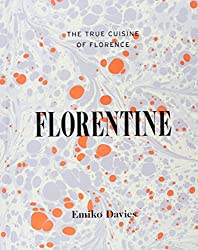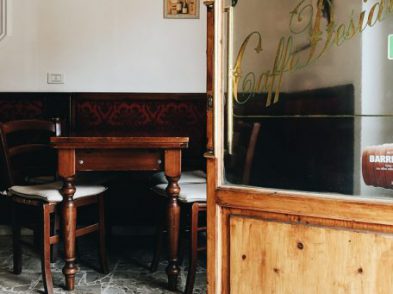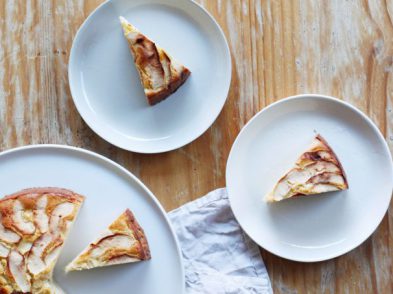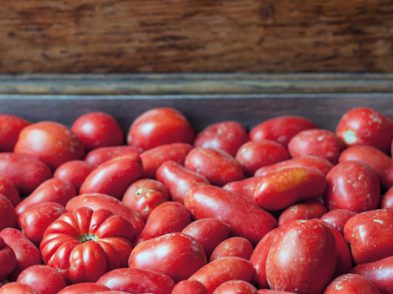
ph. Emiko Davies
Around this time of year, castagnaccio, one of Tuscany’s most comforting and delicious treats appears in cafés, pastry shops and homes. Castagnaccio, which takes its name from its main ingredient, castagna, or chestnut, is often called a ‘cake’ in English translations, but it is more accurately described as something between a cake slice and a dense, thick crepe. For those who experience the texture and flavour of this ancient, rustic Tuscan delicacy for the first time, it can be quite an unusual sensation.
Chestnut flour, made from ground dried chestnuts, is naturally sweet, with an ever so slightly bitter, earthy aftertaste. The earliest versions of this treat relied solely on the natural, subtle sweetness of the chestnut flour and the raisins, but today most recipes call for a few spoonsful of sugar for a hint of more sweetness. Rosemary gives it a fragrant, savoury edge.The batter should be about 1 cm thick when you pour it into the pan: too thin and it can come out dry. In Livorno, an extra-thick version of castagnaccio is found. Known as toppone, it is generally considered less refined, made mainly for filling up hungry bellies.Some orange zest is a traditional and lovely addition, as are walnut pieces. (I’ve even seen a modern version with chocolate chips and chopped hazelnut replacing the raisins, rosemary and pine nuts.) If you want to make this rustic treat more of a dessert, you can serve slices of it topped with slightly sweetened whipped cream or some very fresh ricotta: try whipping it to make it fluffier.
Castagnaccio (serves 10 to 12)
Ingredients
400 grams chestnut flour
45 grams (3 tablespoons) sugar
a pinch of salt
625 ml cold water
3 tablespoons of extra virgin olive oil
100 grams golden raisins
65 grams of pine nuts and/or walnut kernels
1–2 sprigs of rosemary, leaves picked
MethodSift the chestnut flour, sugar and salt in a bowl. Add the water, bit by bit, stirring to avoid lumps. The batter should run off the back of a spoon, much like pancake batter. Depending on the quality of the flour, you may need a little more or a little less water than called for to obtain this consistency.When smooth, add 2 tablespoons olive oil to the batter and let the mixture rest for at least 30 minutes.In the meantime, preheat the oven to 350ºF (180ºC) and soak the raisins and nuts in cold water for 15 minutes (this helps keep them from burning in the oven). Drain.
Pour the batter into a baking dish (roughly 30 x 20cm) lined with parchment paper. It should be ideally about 1cm thick. Evenly scatter over the raisins and nuts. Finish with rosemary leaves and a tablespoon of olive oil.
Bake for about 30 minutes or until you begin to see little cracks appear all over the top. Do not overbake or it will become too dry. Let cool in the pan then slice into squares and serve. Castagnaccio keeps well for a few days in an airtight container at room temperature. Do not refrigerate, as the texture will become hard and rubbery.
Read more from Emiko Davies’ cookbook Florentine: The True Cuisine of Florence, published by Hardie Grant Books. Order your copy of Florentine: The True Cuisine of Florence here.









